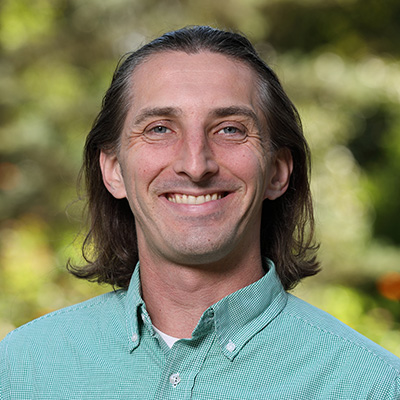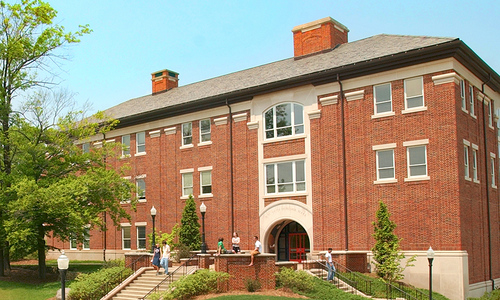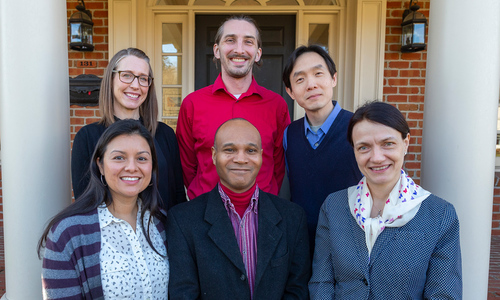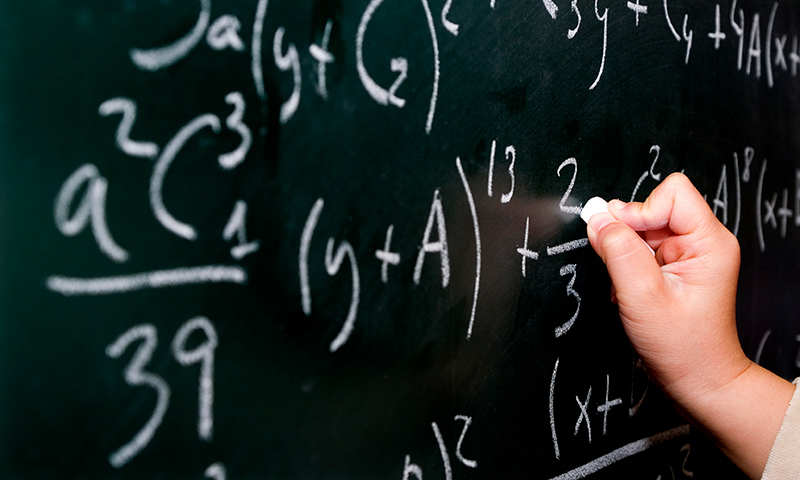David White is an associate professor in the Department of Mathematics. He received a PhD in mathematics and a master’s degree in computer science from Wesleyan University, and his bachelor’s degree from Bowdoin College. He teaches courses in mathematics, computer science, and statistics, and has supervised student research in all three areas. He has published over 30 articles (and a book) on topics in mathematics, applied statistics, computer science, economics, biology, and data science. David is a firm believer in the liberal arts, and teaches interdisciplinary, project-driven courses where students connect their learning with important real-world problems.
In his spare time, David likes to travel as much as possible. As of 2023, he’s visited 143 countries. A long time ago, David was a semi-professional beach volleyball player, but nowadays his main sport is hiking.
Learning & Teaching
- Time Series Analysis
- Statistical Modeling
- Applied Statistics
- Data Systems
- Big Data
- Data Mining
- Bayesian Statistics and Survival Analysis
- Probability Modeling for Actuaries
- Scientific Data and Dynamics
- Markets, Polls, and Social Networks
- Social Network Graphs
- Randomized Algorithms
- Single-Variable Calculus
- Multi-Variable Calculus
- Linear Algebra
- Topology
- Assistant Professor, 2014-2019
- Associate Professor, 2020-present
Research
Much of David's research can be classified as "Data Science for Social Good." He frequently carries out data wrangling and statistical analysis for interdisciplinary teams of researchers, leading to publications that seek to change policy and save lives. This has included research regarding the opioid epidemic in Ohio, policing and protests, wound healing in diabetic individuals, and the war in Ukraine. He co-authored a book, Data Systems, that teaches students how to wrangle data, and multiple papers about data science education (e.g., curricular guidelines, or project-based approaches to teaching statistics).
David's research in mathematics involves building conceptual bridges so that areas from one subfield of mathematics (topology, the study of shape) can be applied ot other subfields of mathematics (e.g., mathematical physics, representation theory, homological algebra, and higher category theory). Experts refer to this as "abstract homotopy theory," and David proves theorems that make it easier for other researchers to apply the ideas of homotopy theory in a broad variety of settings.
Works
- A variant of a Dwyer-Kan theorem for model categories, with Boris Chorny. Accepted to Algebraic and Geometric Topology, 2023.
- Right Bousfield Localization and Eilenberg-Moore Categories, with Donald Yau. Accepted to Higher Structures, 2023.
- Smith Ideals of Operadic Algebras in Monoidal Model Categories, with Donald Yau. Accepted to Algebraic Geometry and Topology, 2023.
- Homotopy theory of algebras of substitudes and their localisation, with Michael Batanin, Transactions of the American Mathematical Society, Volume 375, Number 5, Pages 3569-3640, 2022.
- Monoidal Bousfield Localization and Algebras over Operads, in Equivariant Topology and Derived Algebra, volume 474 of London Math. Soc. Lecture Note Series, Cambridge University Press, pp. 180-240, 2022.
- VEGF-A, PDGF-BB and HB-EGF engineered for promiscuous super affinity to the extracellular matrix improve wound healing in a model of type 1 diabetes, joint with Jeffrey Hubbell, Michael White, and Priscilla Briquez, Nature: Regenerative Medicine, 2021.
- Substitudes, Bousfield Localization, Higher Braided Operads, and Baez-Dolan Stabilization, Mathematisches Forschungsinstitut Oberwolfach, Number 46: Homotopical Algebra and Higher Structures, pp. 56-60, 2021.
- A Statistical Analysis of Drug Seizures and Opioid Overdose Deaths in Ohio from 2014 to 2018, joint with Lin Ma (’20) and Lam Tran (’21), Journal of Student Research, vol. 10(1), 2021.
- Left Bousfield Localization and Eilenberg-Moore Categories, with Michael Batanin. Homology, Homotopy, and Applications, vol. 23(2), pp.299-323, 2021.
- Right Bousfield Localization and Operadic Algebras, with Donald Yau. Tbilisi Mathematics Journal, Special Issue (HomotopyTheorySpectra), pp. 71-118, 2020.
- Introduction to Data Systems: Building from Python, joint with Thomas Bressoud. Springer Nature, 1st Edition, 828 pages, 2020. ISBN 978-3-030-54370-9.
- Chapter on Basic Statistics for the edited volume Data Science For Mathematicians. Edited by Nathan Carter. Chapman and Hall/CRC, 1st edition, 544 pages, 2020. ISBN-13: 978-0367027056.
- The User’s Guide Project: Looking Back and Looking Forward, with Don Larson, Kristen Mazur, and Carolyn Yarnall. Journal of Humanistic Mathematics, Volume 10, Issue 1, pages 411 - 430, 2020.
- An Alternative Approach to Equivariant Stable Homotopy Theory, with Mark Hovey. Tbilisi Mathematics Journal, Special Issue on Homotopy Theory, Spectra, and Structured Ring Spectra, 51-69, 2020.
- Homotopical Adjoint Lifting Theorem, with Donald Yau. Applied Categorical Structures, Volume 27, Issue 4, pages 385-426, 2019.
- Arrow Categories of Monoidal Model Categories, with Donald Yau. Mathematica Scandinavica, 125(2), 185-198, 2019.
- A Project Based Approach to Statistics and Data Science, PRIMUS, Volume 29, Issue 9, pages 997-1038, 2019.
- An Overview of Schema Theory, The Graduate Journal of Mathematics, Volume 3, Issue 2, pages 37-59, 2018.
- Encoding Equivariant Commutativity via Operads, with Javier Gutierrez. Algebraic and Geometric Topology, Volume 18, Number 5, pages 2919-2962, 2018.
- Bousfield Localization and Algebras over Colored Operads, with Donald Yau, Applied Categorical Structures Volume 26, Issue 1, pages 153-203, 2018.
- Model Structures on Commutative Monoids in General Model Categories, Journal of Pure and Applied Algebra Volume 221, Issue 12, pages 3124-3168, 2017.
- Curriculum Guidelines for Undergraduate Programs in Data Science, with Richard De Veaux, et al, Annual Review of Statistics and Its Application, Volume 4, pages 15-30, 2017.
- Baez-Dolan Stabilization via (Semi-)Model Categories of Operads, with Michael Batanin, in “Interactions between Representation Theory, Algebraic Topology, and Commutative Algebra,” Research Perspectives CRM Barcelona, Volume 5, pages 175-179, ed. Dolors Herbera, Wolfgang Pitsch, and Santiago Zarzuela. Birkhauser, 2015.
- A Rational Choice Model of the Rise of Self-Proclaimed States Encompassed in Weak Post-Soviet Economies, with Olga Nicoara. Peer reviewed working paper presented at the 2015 Association of Private Enterprise Education International Conference.
- The User’s Guide Project: Giving Experiential Context to Research Papers, with Cary Malkiewich, Mona Merling, Frank Lucas Wolcott, and Carolyn Yarnall. Journal of Humanistic Mathematics, 5, no. 2, 186-188, 2015.
- A User’s Guide: Monoidal Bousfield localizations and algebras over operads, Enchiridion: Mathematical User’s Guides, Vol. 1, 2015.
- Monoidal Bousfield Localization and Algebras over Operads, Wesleyan Library, 2014.
- Traversals of Infinite Graphs with Random Local Orientations, Wesleyan Library, 2012.
- White Paper Research Report (title is classified), Internal NSA Journal, Division R6, 2010.
- An Investigation into the Structure of Digroups, with A. Magyar, K. Prifogle, and W. Young, Proceedings of the Wabash Summer Institute in Algebra, 2007.
Other
- P. Hoang ‘24 — Testing the Turtle Stock Trading Algorithm
- L. Ma ’20 and L. Tran ‘21 — Data Driven Journalism and the Opioid Epidemic
- C. Smith ‘20 — Data Streaming Methods for Linear Regression Inference Testing
- A. Tybl ‘16 — An Overview of Spatial Econometrics
- T. Masters ‘16 — Using Genomics to Predict Learning Disabilities
- J. Tang ‘16 — Parallel Search on Intersection Graphs



